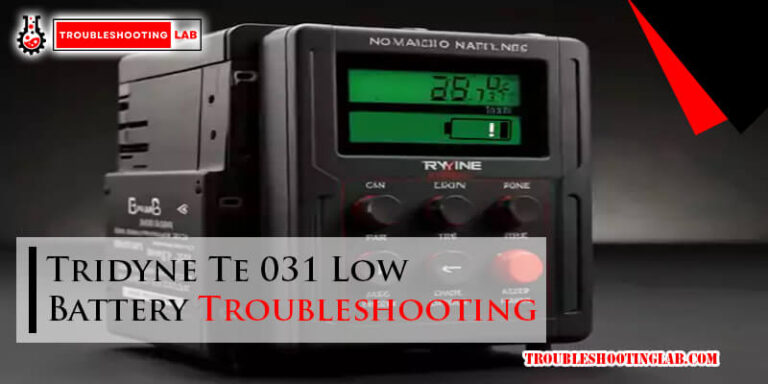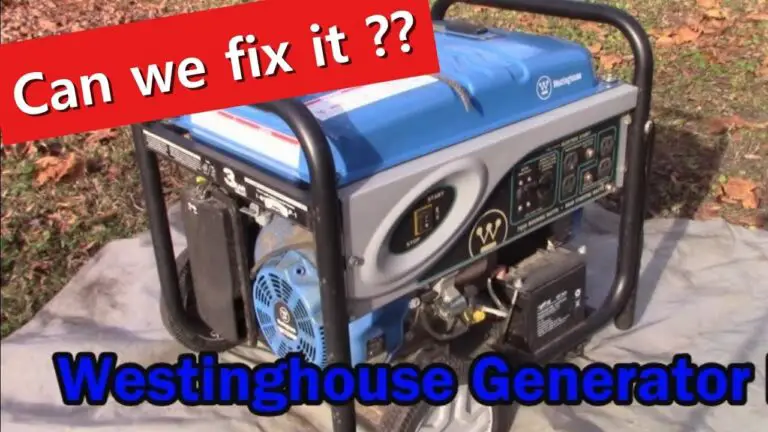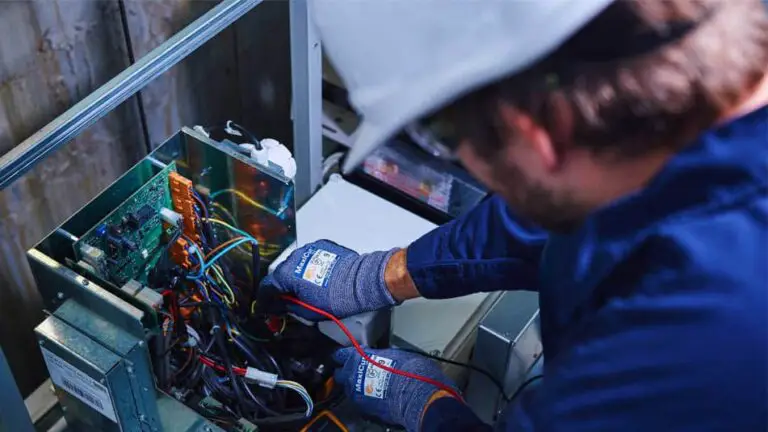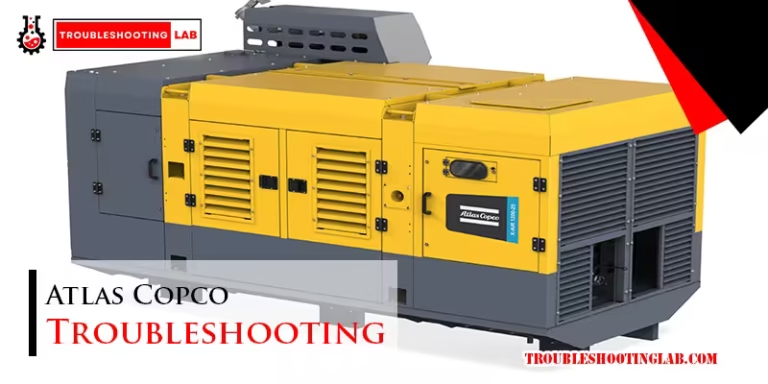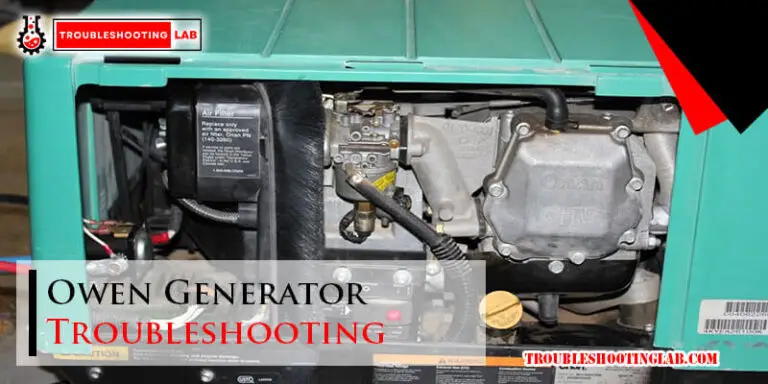Carrier Vfd Troubleshooting: Expert Tips for Quick Fixes
Carrier VFD Troubleshooting: Solving Issues Made Simple When your Carrier Variable Frequency Drive (VFD) isn’t working as it should, it can disrupt your entire system and leave you feeling frustrated. Whether it’s unexpected shutdowns, error codes you can’t decode, or performance issues you can’t pinpoint, you’re not alone.
The good news? Most VFD problems have simple solutions—if you know where to look. In this guide, you’ll discover clear, actionable steps to diagnose and fix common Carrier VFD issues. No technical jargon, no overwhelming processes—just practical advice that gets you back on track.
Ready to take the guesswork out of troubleshooting and regain control of your system? Let’s dive in.

Credit: www.youtube.com
Common Vfd Issues
Variable Frequency Drives (VFDs) are crucial for efficient HVAC systems. They regulate motor speed, enhance energy savings, and reduce wear. Yet, like any equipment, they can encounter issues over time. Identifying and resolving these problems ensures smooth operation and prevents costly downtime. Below, we’ll explore some common VFD issues and their potential causes.
Frequent Tripping
Frequent tripping is a common VFD issue that disrupts operations. It often happens due to overcurrent, undervoltage, or improper settings. Check for loose connections or wiring faults. Overloaded motors can also cause tripping. Ensure the motor matches the VFD’s capacity. Verify that input voltage is consistent and within the recommended range. Adjust the acceleration and deceleration parameters if necessary.
Overheating Problems
Overheating can damage the VFD and reduce its lifespan. Dust accumulation inside the VFD enclosure restricts airflow. Clean the unit and check the cooling fans for blockages. High ambient temperatures may also lead to overheating. Ensure the VFD is installed in a well-ventilated area. Overloading the VFD can also generate excess heat. Match the load with the drive’s rated capacity.
Unusual Noise Or Vibrations
Noise or vibrations may indicate underlying mechanical or electrical issues. Worn-out bearings in the motor can cause vibrations. Inspect and replace them if needed. Electrical noise may result from improper grounding or shielding. Verify that all cables are correctly grounded. Loose mounting bolts can also produce vibrations. Tighten the bolts and secure the VFD properly.
Display Errors
Display errors often point to internal faults or communication issues. Error codes on the display provide clues about the problem. Refer to the VFD’s manual to interpret these codes. Faulty control boards or loose connections may trigger errors. Inspect the connections and reseat any loose components. Software or firmware issues might also cause display errors. Update the firmware to the latest version if available.
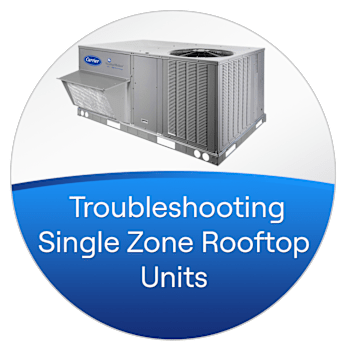
Credit: www.carrier.com
Essential Tools For Diagnosis
Carrier VFDs are vital for controlling motor speed and improving system efficiency. Diagnosing issues quickly is essential to ensure uninterrupted operation. Using the right tools can simplify troubleshooting and improve accuracy. Below are some key tools that every technician should have while diagnosing Carrier VFDs.
Multimeters And Testers
Multimeters help measure voltage, current, and resistance effectively. These readings are crucial for identifying electrical faults in the VFD system. Digital multimeters provide accurate results and are easy to use. Clamp meters are also useful for measuring current without breaking the circuit.
Testers like continuity testers help check connections and wires for breaks. They save time by pinpointing broken circuits quickly. Having reliable multimeters and testers ensures better diagnostics and safety during troubleshooting.
Thermal Imaging Devices
Thermal imaging devices detect heat patterns in electrical components. They are useful for identifying overheating parts in the VFD system. Overheating can indicate loose connections or failing components. These devices help prevent further damage by spotting heat-related issues early.
Using thermal imaging reduces guesswork. It allows technicians to pinpoint problems without physical contact. This improves safety and efficiency during maintenance tasks.
Manufacturer-specific Software
Carrier-specific software provides detailed insights into VFD performance. It allows technicians to access fault codes, monitor parameters, and adjust settings. This software simplifies diagnostics and speeds up repairs.
Many Carrier VFDs are compatible with proprietary software tools. These tools ensure accurate troubleshooting tailored to the manufacturer’s specifications. Using manufacturer-specific programs minimizes errors and enhances system reliability.
Step-by-step Troubleshooting
When your Carrier VFD (Variable Frequency Drive) isn’t working as expected, it can feel frustrating. But many issues can be resolved with a systematic approach. Follow this step-by-step guide to troubleshoot your VFD and get things back on track.
Inspecting Power Connections
Begin by checking the power connections to the VFD. Loose or damaged connections can cause intermittent failures or complete shutdowns. Make sure all wires are securely attached and free of any visible damage like fraying or burns.
Don’t forget to inspect the terminal screws. Are they tightened properly? A simple loose screw could be the culprit behind your VFD issue.
Have you recently done any maintenance work? Wires may have been accidentally moved or disconnected. Take a moment to double-check.
Checking Input Voltage Levels
Measure the input voltage to confirm it’s within the acceptable range specified by the manufacturer. A mismatch in voltage can lead to erratic performance or even damage the VFD.
Use a reliable multimeter for this task. Test across all input phases to ensure balanced voltage. If your readings are off, the problem might be upstream, like a faulty power supply or breaker.
Did you recently experience a power outage? Sudden surges or drops can affect input voltage stability. Address these issues before proceeding further.
Testing Motor Connections
Inspect the motor connections to ensure they are secure and correctly wired. A miswired motor could prevent the VFD from operating properly.
Carefully test the continuity of the motor windings using a multimeter. Open or shorted windings are a red flag for motor-related issues.
Is the motor overheating or making unusual noises? These signs often point to underlying connection problems or motor faults.
Resetting The Vfd
Sometimes, a simple reset can resolve temporary glitches. Check the VFD manual for the correct reset procedure specific to your model.
Have you tried powering down the VFD completely and restarting it? This can clear minor errors and restore normal operation.
Before resetting, ensure you’ve noted any error codes or fault messages displayed. These codes can provide valuable insights if the problem persists after the reset.
Troubleshooting a Carrier VFD doesn’t have to feel overwhelming. With a logical, step-by-step process, you can often pinpoint and fix the issue without needing advanced technical expertise. What step will you tackle first?

Credit: www.alatas.com
Preventive Maintenance Tips
Preventive maintenance is the backbone of keeping your Carrier VFD (Variable Frequency Drive) running smoothly. Skipping these simple tasks can lead to costly repairs or even complete system failure. Let’s dive into some actionable tips to ensure your VFD stays in top shape.
Regular Cleaning Schedules
Dust and debris are silent killers for your VFD. Over time, clogged vents can cause overheating and reduce the lifespan of the unit.
Set up a cleaning schedule to remove dust from the cooling fans, heat sinks, and other components. Use a soft brush or compressed air to clean these areas without damaging sensitive parts.
Don’t forget to check the control panels. A quick wipe with a dry or slightly damp cloth can prevent dust buildup on buttons and screens. How often do you clean your VFD? If it’s been more than six months, it’s time to grab that brush.
Monitoring Ambient Temperature
Did you know that high temperatures can cause your VFD to fail prematurely? Excessive heat stresses the internal components, leading to breakdowns.
Place your VFD in a well-ventilated area where air can circulate freely. Avoid installing it near heat sources like boilers or direct sunlight.
Use a thermometer to monitor the surrounding temperature regularly. Ideally, keep the ambient temperature between 10°C and 40°C. If the room feels too warm for you, it’s probably too warm for your VFD, too.
Updating Firmware
Outdated firmware can limit your VFD’s performance and leave it vulnerable to errors. Manufacturers often release updates to fix bugs or add new features.
Check the manufacturer’s website for the latest firmware version. Compare it with your current version, which you can usually find in the VFD’s settings menu.
Follow the update instructions step by step. Most updates are straightforward and take only a few minutes. Have you updated your firmware this year? If not, you might be missing out on critical improvements.
By sticking to these preventive maintenance tips, you can extend the life of your Carrier VFD and avoid unexpected downtime. What’s your next step to keep your system in peak condition?
When To Call An Expert
Carrier VFDs (Variable Frequency Drives) are reliable but can face issues. Some problems are easy to fix, while others need expert attention. Knowing when to call a professional saves time and prevents further damage.
Recurring Faults
If the same fault keeps appearing, it could point to deeper issues. Resetting the drive or clearing the error may not solve the root problem. Recurring faults often involve system imbalances or internal component failures. An expert can diagnose and fix such problems effectively.
Complex Error Codes
Hardware Damage
Physical damage to the VFD or related components needs immediate expert help. Burnt circuits, broken wiring, or damaged panels can worsen if handled improperly. Experts ensure safe repair and prevent risks like short circuits or system failure.
`Best Practices For Longevity
Carrier Variable Frequency Drives (VFDs) are essential for optimizing energy use and controlling motor speed. But like any equipment, their performance depends heavily on how they’re handled and maintained. Adopting the right practices can extend their lifespan and save you from costly downtime or repairs.
Proper Installation Techniques
A strong foundation starts with proper installation. Make sure the VFD is installed in a clean, ventilated area away from excessive heat, dust, or moisture. These environmental factors can cause overheating or damage to internal components.
Double-check all wiring connections to ensure they’re tight and secure. Loose connections can lead to arcing, which could damage your VFD. Don’t forget to follow the manufacturer’s guidelines for installation—skipping steps might seem faster but could cause long-term issues.
Matching Vfd To Motor Specs
Your VFD needs to be compatible with your motor’s specifications. Check key parameters like voltage, current, and horsepower ratings. If these don’t align, your VFD might overwork itself or fail prematurely.
Imagine trying to wear shoes that are the wrong size—it’s uncomfortable and causes problems in the long run. The same principle applies here. Selecting the right match ensures smoother operation and reduces wear and tear on both the VFD and the motor.
Consistent Load Management
Sudden spikes or drops in load can stress your VFD. Aim for steady, consistent load conditions whenever possible. If your application requires frequent changes in load, make sure the drive is configured to handle those transitions smoothly.
Regularly monitor the load and adjust settings as needed. For example, if your system frequently runs at low loads, ensure the VFD has a low-load optimization mode. Small tweaks like this can make a big difference in extending the VFD’s operational life.
Are you keeping an eye on your VFD’s performance indicators? Ignoring them could mean missing warning signs of overload or inefficiency. Proactive adjustments can save you from sudden breakdowns and costly repairs.
Conclusion
Troubleshooting a Carrier VFD can seem challenging but becomes easier with practice. Pay attention to error codes and symptoms for accurate diagnosis. Regular maintenance can prevent many common issues from occurring. Always follow safety guidelines while working with electrical components.
If problems persist, consult a professional technician to avoid damage. Understanding your system’s manual is also helpful for quick fixes. Stay proactive to keep your VFD running smoothly and efficiently. This not only saves time but also reduces downtime and repair costs.
With consistent care, your Carrier VFD will perform reliably for years.

